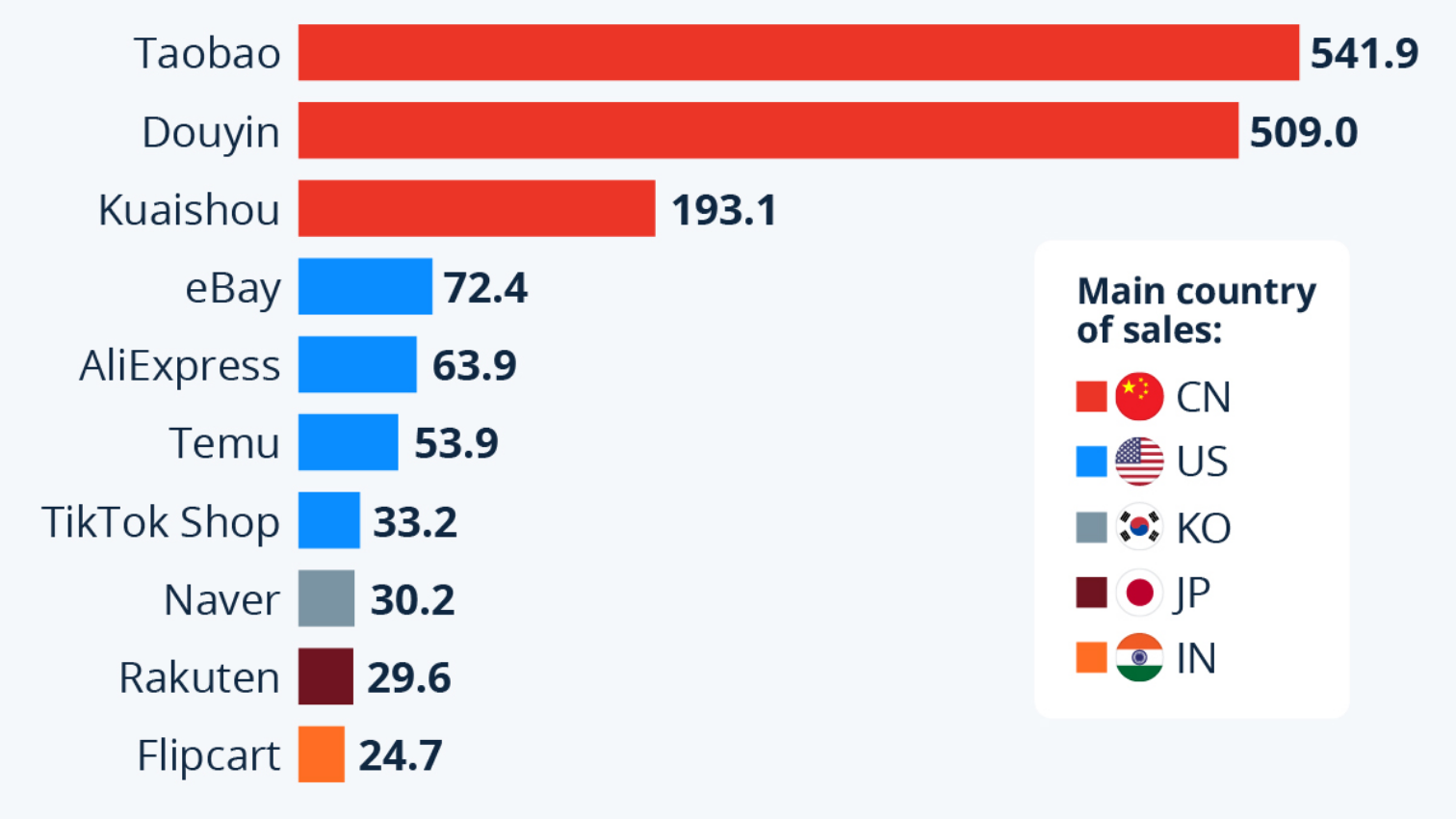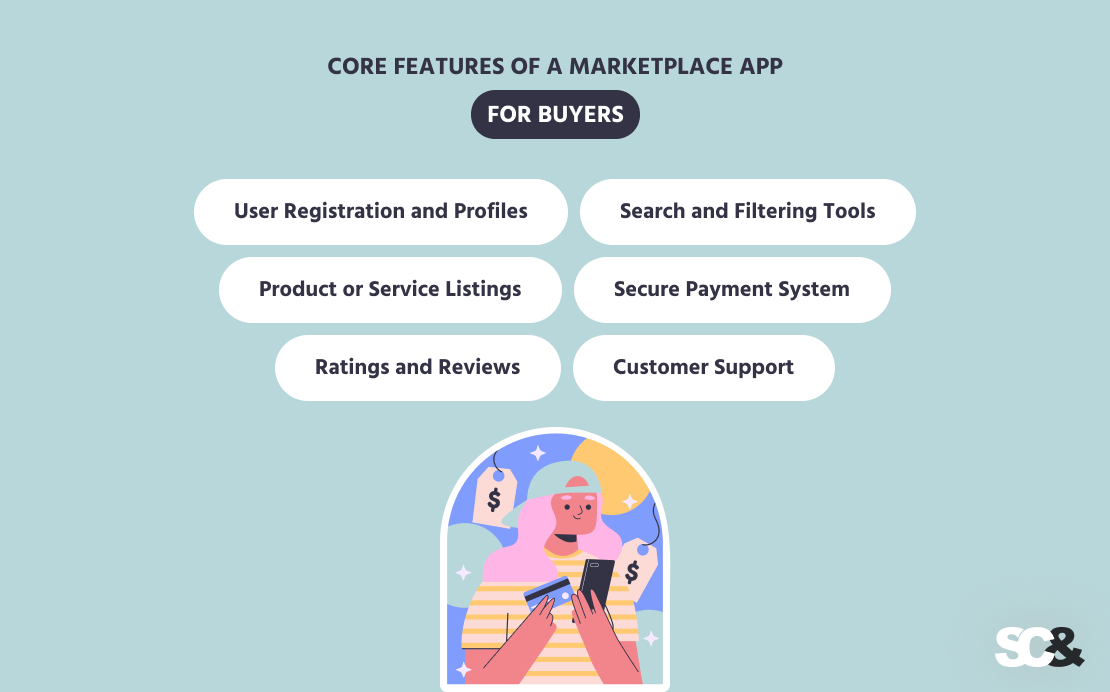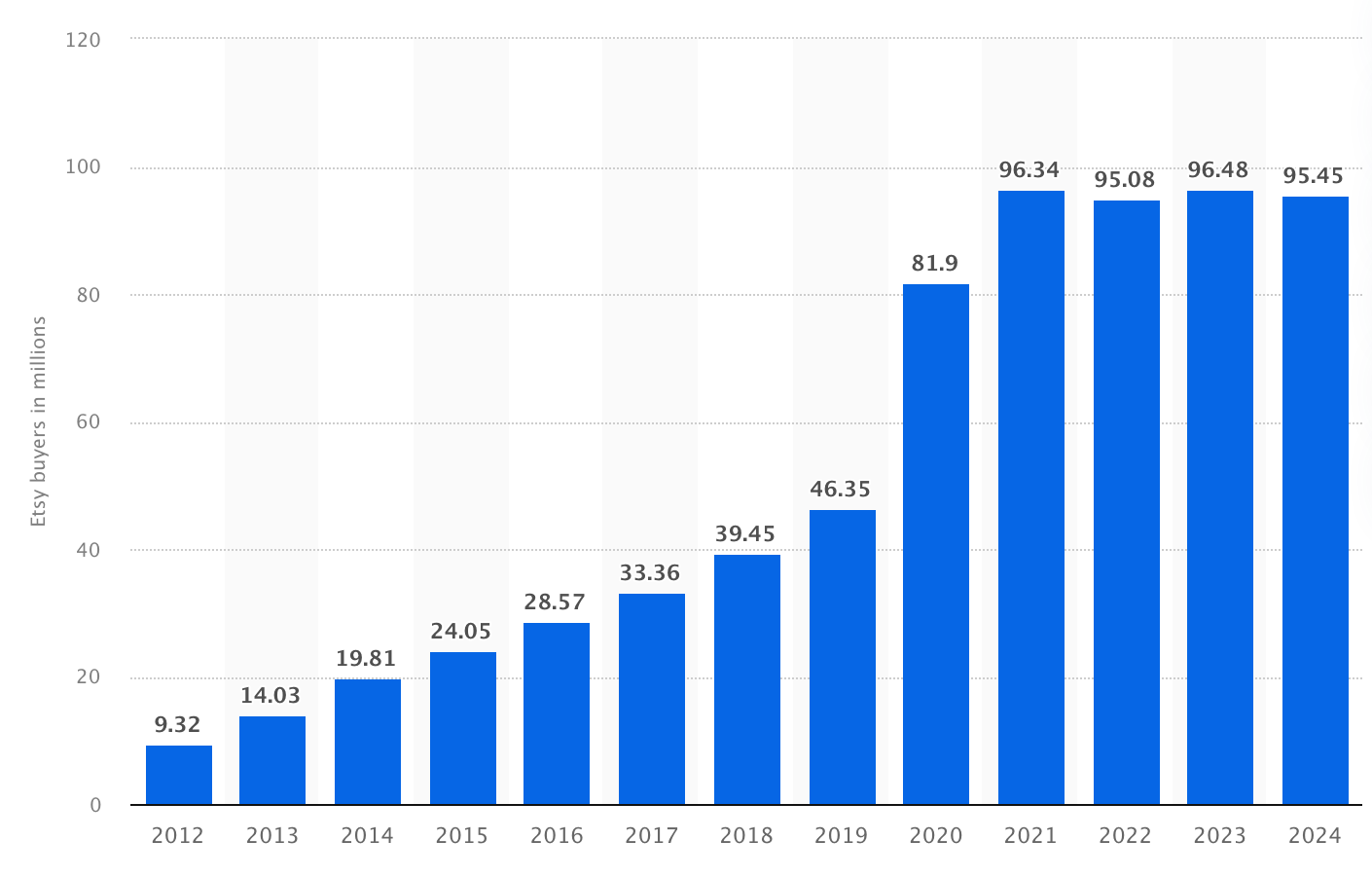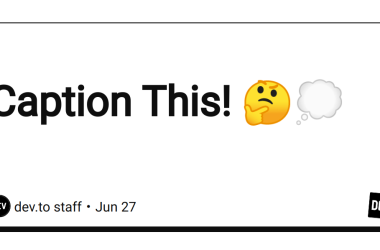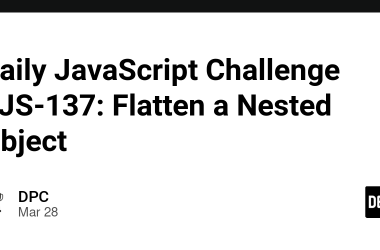When talking about marketplaces, people almost naturally think of Amazon or eBay. Their reputation precedes them not only because they pioneered the online retail industry, but also because they have maintained their leadership for over two decades.
However, as of 2025, there are hundreds of marketplaces worldwide focused on selling everything from handmade goods to freelance gigs.
If you’re looking to create your own marketplace app, topping global app download rankings or at least the one growing steeply in revenue, this guide will walk you through every step, from idea to takeoff.
What Is a Marketplace App and Why Build One?
A marketplace app is a digital platform that connects multiple parties — typically buyers and sellers — within a single, shared ecosystem.
Its purpose is to enable transactions without the need for the owner of the platform to deal with inventory, logistics, or direct selling.
Whether users are buying products, reserving services, or leasing assets, the app acts as an intermediary that gives the framework for discovery, dialogue, and payment processing.
Marketplace apps can take various forms depending on their niche and business model — from retail and travel platforms to freelance networks and food delivery services.
Regardless of the industry, all successful marketplaces have one thing in common: they make it easy for users to find what they need, compare options, and complete transactions with confidence.
Why Is It Worth Creating a Marketplace?
Building a marketplace app can be a lucrative business opportunity. For instance, since its launch in September 2022, Temu (a Chinese online marketplace) has achieved tremendous success, with its monthly gross merchandise volume surging by over $600 million in less than a year.
Similarly, its competitor, Shein, continues to experience exponential annual revenue growth. Walmart, in turn, launched its own online marketplace in 2009. After several years without much output, the bet started to pay off.
And such success is quite understandable. Unlike traditional e-commerce, where sellers manage inventory and logistics, a marketplace acts as a mediator.
This means lower overhead costs, scalable revenue streams, and faster growth potential. Marketplaces also benefit from network effects — the more users come, the more valuable a platform becomes to everyone involved.
Another thing is that a marketplace can be built for every area people are familiar with, such as e-commerce, freelance services, real estate, digital artwork & NFTs, eco-friendly products, and education and courses.
The World’s Biggest Marketplaces by GMV, Statista
How Does a Marketplace Make Money?
A marketplace application has the ability to earn money in numerous ways, based on its configuration and who it serves.
The most prevalent approach is transaction commission charging. Each time a buyer purchases an item or books a service, the platform takes a small percentage of the payment. This works for marketplaces, where all the transactions are done through the app.
Another strategy is the freemium model, where basic functionality is free to users but they pay extra money for premium features, such as greater visibility, in-depth analytics, or priority support.
Some marketplaces use a pay-per-listing (PPL) system. In this case, sellers pay a fixed fee to post or highlight their products or services. It’s common for platforms dealing with real estate, vehicles, or job ads.
The advertising model is no less widespread. Here, the platform displays sponsored listings or banner ads for a fee. It’s a simple way to monetize traffic without charging users directly, and it works especially well when the app has a large audience.
Finally, many platforms offer a subscription model, where sellers or buyers pay a monthly or yearly fee for certain benefits. These might include lower transaction fees, exclusive listings, or access to premium tools.
Types of Marketplace Apps
The online marketplace model works well everywhere. However, facing increasing competition, e-commerce companies usually opt for different business strategies, instead of offering everything for everyone.
B2C (Business-to-Consumer)
The most commonly used one is the B2C (Business-to-Consumer) marketplace that connects businesses with end-users. Sellers upload products, and buyers browse, compare, and purchase directly in the app.
Examples:
- Amazon
- AliExpress
- Zalando
B2C marketplaces encourage customers to shop with numerous options in one place. The vendors, in turn, benefit from the outreach, promotion, and logistics services of the platform, while the marketplace collects commissions or other charges on transactions.
B2B (Business-to-Business)
Another major category is the B2B (Business-to-Business) marketplace, where one company sells products or services to another company. These platforms help organizations find suppliers, compare prices, and purchase products or services in bulk.
Examples:
- Alibaba
- ThomasNet
- IndiaMART
B2B marketplaces solve the problem of discovering dependable suppliers, simplify procurement, and often provide tools for managing orders, quotes, and logistics. They are especially helpful in manufacturing, wholesale trade, and industrial services.
C2C (Consumer-to-Consumer)
C2C marketplaces allow individuals to sell directly to other individuals. These platforms are more suitable for second-hand items, customized products, collectibles, or personal services.
Examples:
- eBay
- Etsy
- Facebook Marketplace
C2C marketplaces offer a convenient platform for everyone to sell without a formal business. Buyers get one-of-a-kind goods, fair prices, and community ratings and reviews. The marketplace usually earns money through listing fees, commissions, or pay-per-service.
Peer-to-Peer Service Marketplaces
A newer and fast-growing segment is the peer-to-peer (P2P) service marketplace, which focuses on sharing or renting as opposed to selling. They connect people who have something to offer, be it an extra room, vehicle, or time, with people needing it.
Examples:
- Airbnb
- Turo
- TaskRabbit
P2P marketplaces release underused resources and provide versatile sources of earnings. They rely heavily on trust, reviews, and secure payment systems.
Core Features of a Marketplace App
Matching third-party sellers with buyers on the marketplace platform has proven to be a profitable business. For example, Amazon earns over $36 billion quarterly via third-party seller services alone.
But what sets successful platforms apart from the less successful ones? It’s obvious that this is the marketplace’s “filling”.
For Buyers
Buyers are the lifeblood of all marketplaces. The website should help them discover what they need, pay safely, and have a pleasant, trouble-free experience from search to delivery.
- User Registration and Profiles: The buying path starts with a sign-up process. A personal profile must store order history, payment preferences, saved searches, and delivery addresses.
- Search and Filtering Tools: A good search system is what makes or breaks user satisfaction. Buyers should be able to find what they want in seconds using search bars, categories, tags, or filters such as price, rating, delivery time, or location.
- Product or Service Listings: Detailed listings build trust and help users make informed decisions. Each listing should include clear descriptions, multiple photos, pricing, delivery terms, and seller details.
- Secure Payment System: Payments are one of the most sensitive parts of a marketplace app. To ensure trust, it’s important to integrate payment gateways. At the same time, buyers appreciate having multiple payment methods, from credit cards and digital wallets to cryptocurrencies.
- Ratings and Reviews: Social proof is one of the strongest motivators in online shopping. Letting buyers leave reviews and rate sellers or products encourages honesty and quality service. For example, Uber Eats and Upwork both rely heavily on rating systems to build trust between users and providers.
- Customer Support: Buyers should be able to get help quickly — whether via live chat, chatbots, email, or a detailed FAQ section.
- Discounts, Bonuses, and Coupons: Many buyers look for ways to save. A flexible system of promotional codes, loyalty bonuses, and seasonal discounts can greatly strengthen engagement and retention.
For Sellers
As of early 2025, there are around 9.7 million registered sellers worldwide on Amazon only, with around 2.5 million considered active. Given this fact, it’s clear that a well-designed platform should help sellers not only list and manage their products but also stand out.
- Storefront or Profile Setup: Each seller should have their own customizable storefront or profile page, where they can display their products, add brand details, and communicate with buyers.
- Inventory or Service Management Tools: Efficient management tools help sellers stay organized. They should be able to upload products, adjust stock levels, change prices, and mark unavailable items.
- Order Management: Managing multiple orders at once can be overwhelming without a proper system. A seller dashboard should show incoming orders, delivery statuses, and payment updates.
- Analytics Dashboard: Data helps sellers grow smarter. Analytics tools can show how many people view their listings, which items perform best, and how sales change over time.
- Payment and Payout Management: Sellers need visibility into all financial operations — from pending and completed transactions to payout schedules, support for local currencies, VAT and regional tax compliance, and automatic invoicing.
- Review and Feedback System: A two-way review system ensures fairness. Sellers can rate buyers or respond to feedback, helping maintain a healthy environment.
- Advertising or Promotion Options: Promotions are a great way for sellers to increase visibility. Marketplaces can offer paid ads, featured listings, or banner placements.
How to Build a Marketplace App Step by Step
Developing a marketplace resembles a marathon, not a sprint — but if breaking it into smaller substeps, you can move quickly without losing focus.
Below are the practical tips we recommend to stick to in mobile app development: they clarify what to do and why it matters, as well as give some tangible examples so you don’t get stuck along the way.
Research the Market
Before writing a single line of code, it’s vital to understand who will use the product and why. Market research helps validate demand, discover pain points, and size the opportunity.
What you should do:
- Talk to potential users (both buyers and sellers) to learn their needs, frustrations, and willingness to pay.
- Study direct competitors and adjacent platforms: what features they offer, where they’re weak, and how they price services.
- Specify the target niche and ideal user persona (location, age, budget, tech comfort).
- Estimate market metrics: addressable market size, typical order value, average frequency, and seasonal trends.
Clarify the Business Model
A clear monetization plan (commission, subscription, freemium) influences product decisions and growth tactics. But this does not oblige you to choose one scheme and stick to it to the end. You can pick a primary model and combine one or two secondary streams.
Apart from the aforementioned models, it’s vital to define the following parameters:
- Pricing levels / fee percentages / trial periods
- Refund and dispute policies
- Financial KPIs to track: GMV (gross merchandise volume), take rate, CAC (customer acquisition cost), LTV (lifetime value), churn
Example of what it may look like: For a niche craft marketplace, you might combine a low commission (5–10%) + an optional seller subscription for advanced analytics and marketing credits.
Choose the Right Development Experts
The team you assemble and the technologies you choose will directly influence how swiftly you can iterate and how well your marketplace app scales over time.
A foundation starts with having the right people in place. You’ll need a product manager to specify priorities and align the team around a common vision, a UX/UI designer to make the app comfortable and enjoyable to use.
On the technical side, you’ll need backend developers to manage the core logic, data, and payments, and frontend developers to bring the design to life on web and mobile.
QA, DevOps, and security specialists will make sure everything runs as demanded when launched.
When it comes to the tech stack, the development team will recommend technologies that match your strengths and your product’s goals.
Common combinations include Node.js, .NET, or Python for the backend, React, Vue, or Flutter for the frontend, Swift for iOS, Kotlin for Android, and PostgreSQL or MongoDB for database management — or other technologies based on the custom preferences of the client, if applicable.
Develop an MVP (Improvements, Predictability, UX Validation)
An MVP, or Minimum Viable Product, is the simplest working version of your marketplace app that still delivers real value to users.
Its main purpose is to test your idea in real conditions, confirm or deny demand, and collect feedback before investing in full-scale development.
Practically, the MVP helps you:
- Discover potential improvements because real users reveal gaps you can’t imagine.
- Get higher predictability — you learn conversion rates, onboarding drop-offs, and actual economics.
- Validate UX since you check whether users understand and enjoy the core flows before expanding.
Collect Feedback and Move to Version 2.0
After the MVP, it’s time to double down on validated features and fix the biggest blockers. In order to move further, you can combine quantitative data (analytics, funnel drop-offs) with qualitative input (user interviews, support tickets).
After that, you can prioritize improvements that increase retention, reduce friction, or raise GMV.
What to include in v2.0:
- Features that improve trust & conversion: reviews, dispute resolution, seller verification, and improved search relevance.
- Seller growth tools: promotions, analytics, bulk listing import, multi-channel sync.
- Buyer convenience: saved searches, wishlists, one-click checkout, multi-currency support.
- Automation and scale: background jobs, improved monitoring, autoscaling.
After launching your marketplace, roll out new features gradually using feature flags to monitor results and reduce risk. Run A/B tests on pricing, listing placement, and onboarding flows to see what drives engagement and conversions.
Keep a close eye on your unit economics — if customer acquisition cost (CAC) exceeds lifetime value (LTV), adjust your marketing or retention strategy. Continuous measurement and quick iterations are key to steady, sustainable growth.
Marketplace App Development Cost
When it comes to software development, the main question is the price. The end cost of creating a marketplace app depends on its size, complexity, and the team’s location. On average:
- Basic marketplace app (listings, search, and payments): $20,000–$50,000
- Mid-level app (messaging, analytics, social login, mobile support): $50,000–$120,000
- Advanced app or enterprise mobile app (AI recommendations, multi-platform, complex backend): $120,000–$300,000+
Overall, the main factors that affect the price include the number of features, supported platforms (web, iOS, Android), design complexity, third-party integrations, and developer rates.
Maintenance and scaling after launch usually cost 10–20% of the initial budget annually. For startups, it’s best to start with an MVP in the $30,000–$50,000 range to test the hypothesis and refine the app based on user feedback.
Common Challenges in Online Marketplace App Development
Making a marketplace app is exciting, but it comes with a few important challenges. The first is choosing the right technology stack, which fully affects what the app will be. Popular options include LAMP (Linux, Apache, MySQL, PHP/Python) and MEAN (MongoDB, Express.js, Angular.js, Node.js).
Another problem is launching all and everything at once. Many apps fail because they don’t test their ideas with real users — about 42% of failures come from poor market research.
Starting with an MVP lets you test your concept, collect feedback, and improve your app before investing too much time or money. This way, you build something people actually want.
Top Successful Marketplace Apps
When building a custom marketplace, it can be pretty valuable to study the titans of e-commerce. Looking at them helps understand what works and why, solve real problems, and build trust.
Amazon
Amazon is one of the world’s largest online marketplaces, connecting millions of sellers with consumers across the globe. It offers virtually everything, from books and electronics to groceries and clothing.
Its success comes from fast shipping through Fulfillment by Amazon (FBA), personalized product recommendations, open customer service, and a simple checkout.
Amazon combines a broad marketplace with subscription services like Prime, increasing customer loyalty.
eBay
At just 30 years old, eBay is a true e-commerce giant. Despite numerous transformations over the years, the company remains the fourth-largest third-party seller in the world, returning to its roots as an auction site where anyone could sell their personal belongings and goods.
The company also remains the third-largest e-commerce player in the US by total sales of both third-party and first-party goods (after Amazon and Walmart) and the tenth-largest globally in this category, according to ECDB.
Etsy
One company that has done especially well in satisfying the demand for artsy, crafty, and vintage products is Etsy, which is coming up to 100 million active buyers.
Etsy, by its nature, is a niche marketplace that connects creative sellers with buyers looking for personalized or unique items. Its community-driven approach, strong seller support, and search optimization make it easier for small artisans to reach global customers and maintain a distinctive brand identity.
Number of Active Etsy Users, Statista
Airbnb
Airbnb is a peer-to-peer marketplace in the travel and hospitality sector. It connects property owners with travelers seeking short-term accommodations.
Airbnb’s success lies in its trust and safety features — verified listings, user ratings, secure payments — combined with an intuitive booking system that makes both hosting and staying simple and convenient.
Upwork
Upwork isn’t the classic marketplace in human understanding. Being a freelance services marketplace, it connects businesses with independent professionals worldwide, provides secure payment options, project tracking tools, and dispute resolution.
Its success comes from offering freelancers a platform to showcase their skills and clients a way to hire trusted specialists.
Why Partner with SCAND?
SCAND brings over 25 years of software development experience and a portfolio of 200+ projects across e-commerce, travel, healthcare, and fintech.
We offer full marketplace development, including market research, business model planning, UI/UX design, backend and frontend development, secure payment integration, MVP creation, testing, and post-launch support.
Our team of developers, designers, QA engineers, and DevOps specialists uses all modern technologies, such as React, .NET, Node.js, and AWS.
Besides, we focus on launching an MVP first to try the concept with real users, collect feedback, and make improvements.
SCAND is more than a development team — we’re a long-term partner. We provide continuous maintenance, updates, performance optimization, and feature expansion.
With our proven track record of building marketplaces similar to apps like Amazon, Etsy, Airbnb, and niche platforms, partnering with SCAND combines your vision with our expertise, giving your marketplace the best chance to make a name.
The post How to Build a Marketplace App: Step-by-Step Guide appeared first on SCAND.

